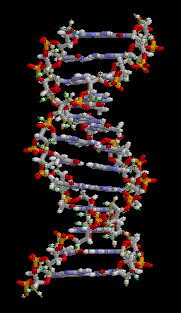In this section we seek to add to our knowledge about the current developments in DNA technology, and how that can help reveal the origins, clear up questions, and support or discount conclusions about of some of the earliest ancestors at the Cape. We will also include migration maps of the various mtDNA and Y-DNA haplogroups, and the results of DNA testing in some families, and how this impacts interpretations of the origins of individual founding ancestors of the period.

Human DNA is found in the chromosomes of every cell in the body and it is what tells each cell what its role is. It is a long double-helix of repeating units known as nucleotides which combine to form a polymer.
Nucleotides are molecules in a chain of alternating sugars and phosphate groups with nucleobases identified as G, A, T and C attached to the sugars.
Nucleobases are a group of nitrogen-based molecules that are required to form nucleotides, the basic building blocks of DNA and RNA. Nucleobases provide the molecular structure necessary for the hydrogen bonding of complementary DNA and RNA strands, and are key components in the formation of stable DNA and RNA molecules.
Two types of DNA are very stable and are passed virtually unchanged from parent to child over countless generations.
These are Y-DNA, from the Y-chromosome, passed only from father to son; and mitochondrial DNA (mtDNA) passed from mother to child. Of the two, mtDNA is the most stable and passes matrilinealy from mother to daughter, unchanged - i.e. without mutating - over thousands of generations.
Consequently these types of DNA are very useful in establishing the migration patterns of humans and can assist genealogists in interpreting evidence in the record, particularly when the only available evidence is circumstantial.
It is worth bearing in mind that as DNA technology advances, and becomes cheaper, the knowledgebase expands and refines rather than changes. In the infancy of the technology, tests were only able to identify a few markers or mutations - today, the latest tests generally available to private individuals are able to identify up to 150,000 markers including the rare Neanderthal and Denisovan markers. Pinpointing the origins of ancestors becomes increasingly accurate as the technology advances and the markers of more and more clades and sub-clades are identified.
Identifying your own mtDNA or Y-DNA haplogroup and subgroup through appropriate DNA testing cannot prove your descent from an ancestor generations past - but if several documented direct lineal descendants are tested with identical or near identical results, the likelihood of their descent from the same individual is very strong.
On the other hand, your DNA haplogroup or sub-group can disprove a lineal descent.
This section is in development and will be added to over time.